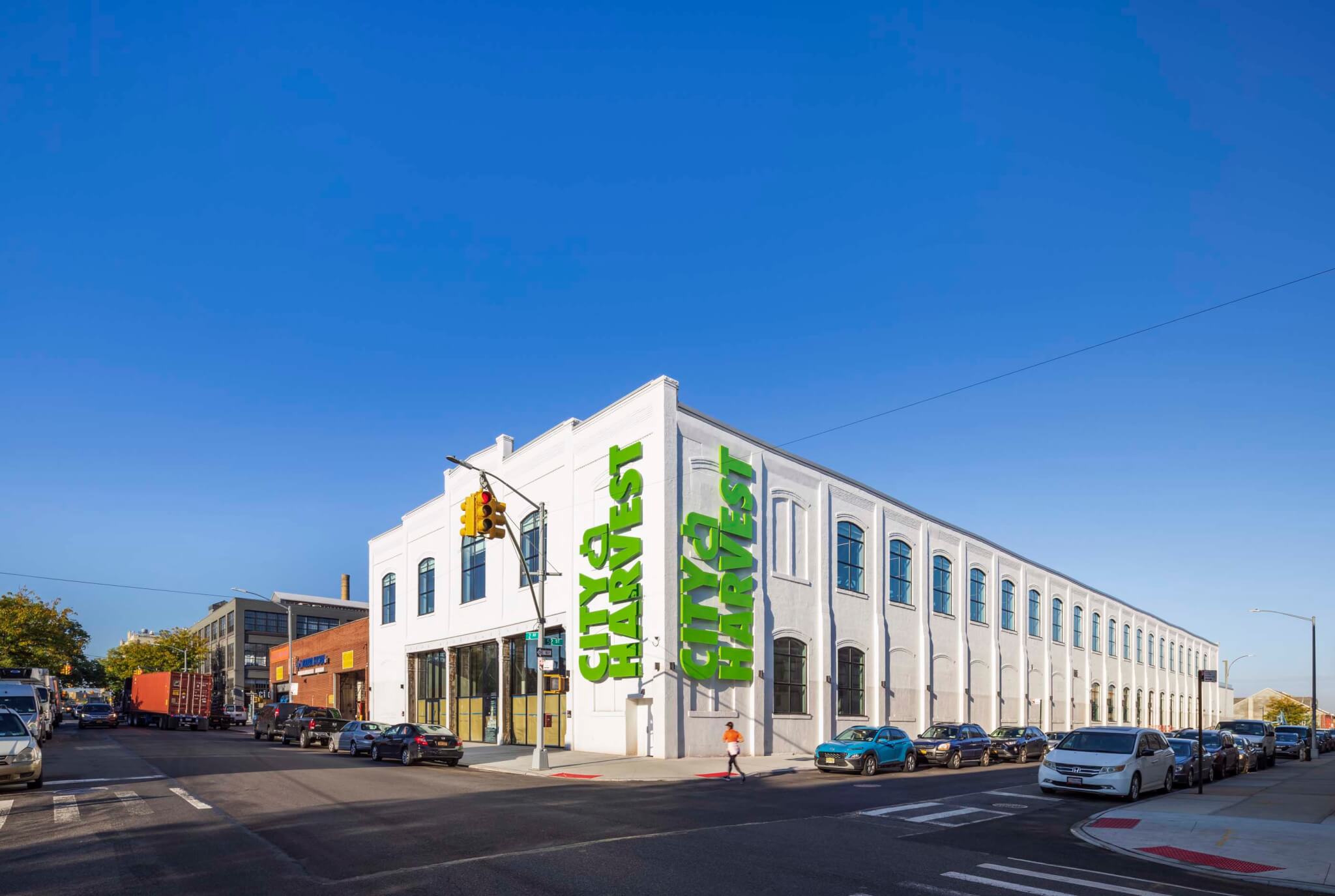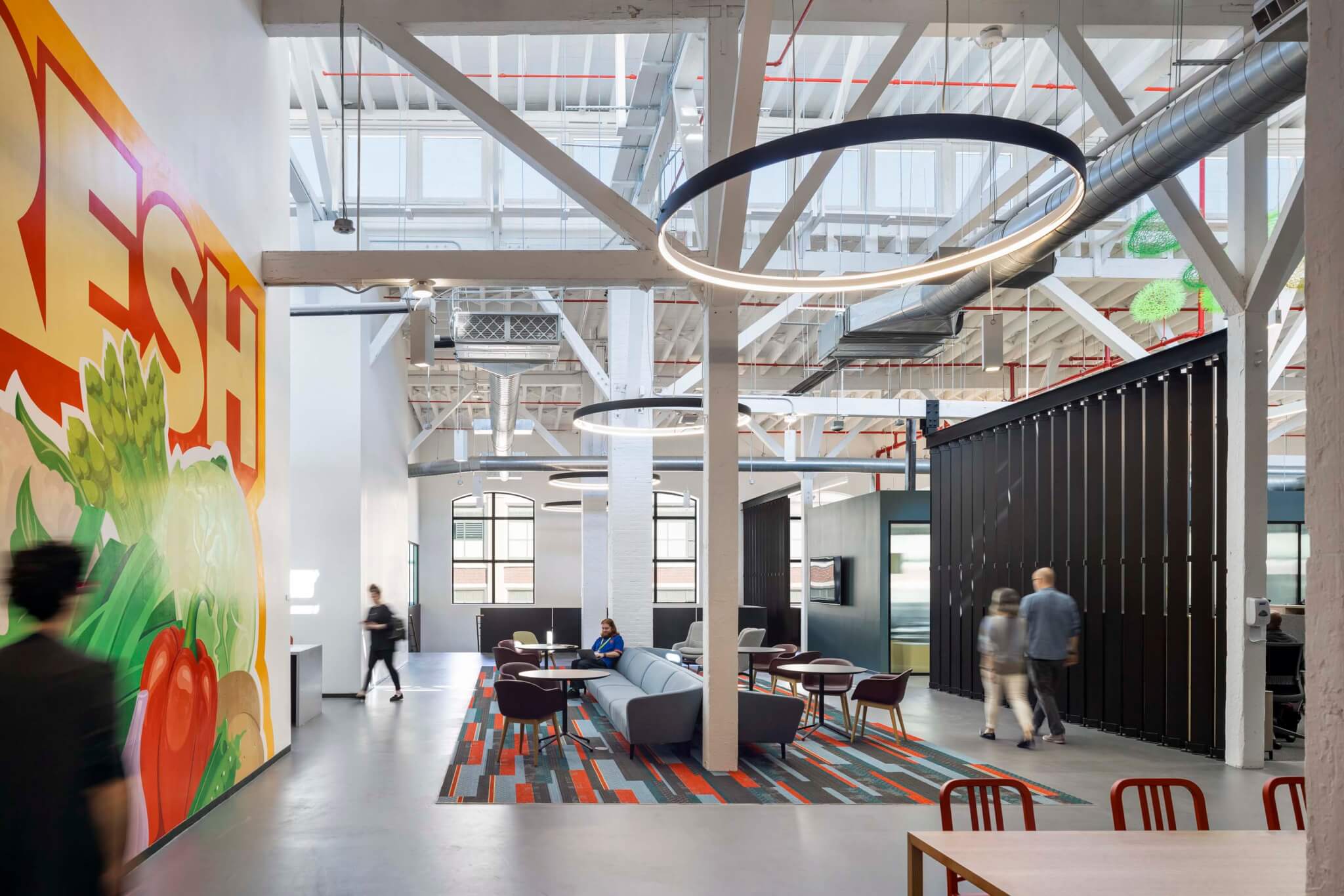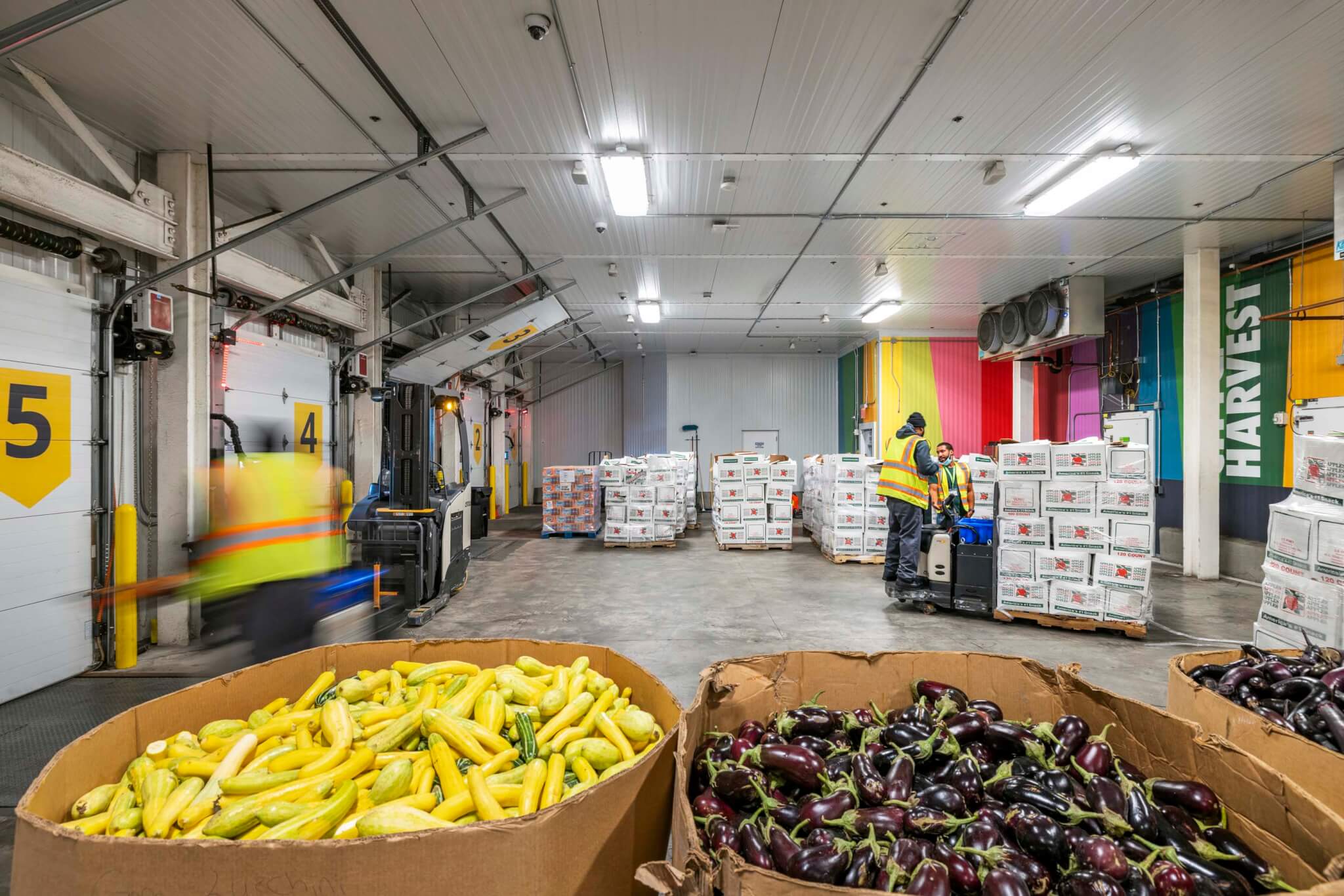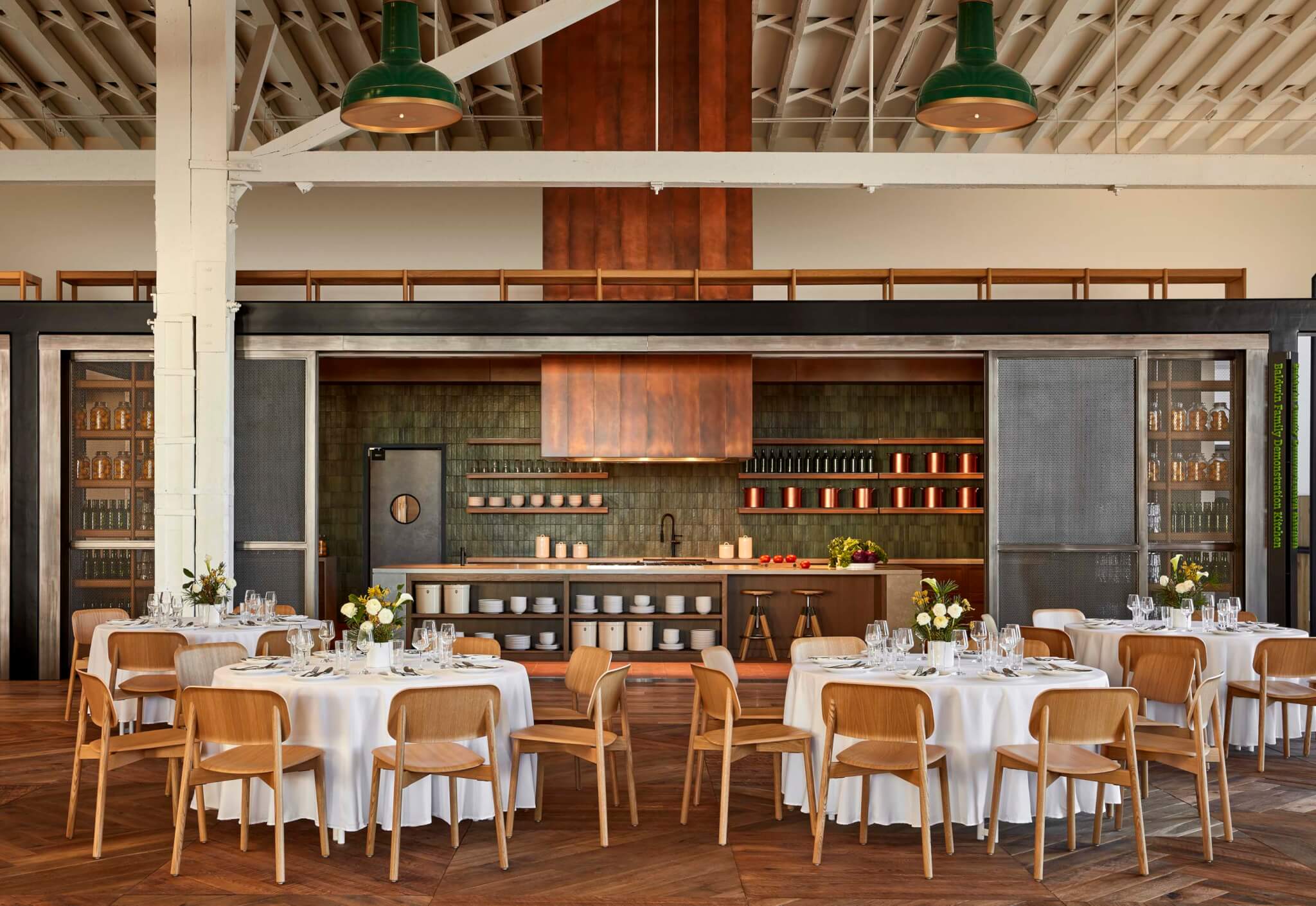With inflation at a 40-year high, demand at New York City food pantries has increased by over 14 percent since the start of this year, in addition to more usage since the beginning of the pandemic in 2020. City Harvest, a food rescue organization that stocks pantries and soup kitchens across all five boroughs, has responded to the increased need with a new headquarters that houses the organization’s offices, in addition to food rescue and delivery operations, an event space, and a demonstration kitchen. The new 150,000-square-foot facility the Cohen Community Food Rescue Center in Brooklyn’s Sunset Park is located within a former warehouse used to service trains in the late 19th and early 20th centuries. An overhaul of the historic, wood-framed structure led by Ennead Architects alongside hospitality design firm Rockwell Group and New York–based Ware Malcomb resulted in a design that is both community-oriented and energy-efficient.
Prior to completing this new location, City Harvest’s largest distribution center was located a borough over in Long Island City. This new center includes double the amount of square footage when compared to this precedent, with more space for refrigeration, packaging, and loading of food. The revamped warehouse responds to the neighborhood’s industrial past while also integrating contemporary elements through eye-catching graphics and brightened interiors. Taking a light touch approach, the architects maintained much of the existing structure and masonry, added white paint throughout, and kept mechanical elements exposed. To maximize daylighting within the building, the design team unmasked several of the long-covered-over clerestory windows lining the warehouse’s roof.

While the building is designed to do good for the community it serves, a number of sustainable upgrades allow it to also help the environment: Among these features are solar panels, composting and recycling streams, energy-efficient lighting, electric charging stations, radiant heating and cooling systems, and the integration of recycled materials such as concrete, brick, paving, and metals. The project is targeting LEED Gold certification.
“City Harvest’s new home reflects the power and purpose of their mission. Ennead is proud to have transformed a beautiful historic warehouse into an environmentally responsible state-of-the-art workplace, community resource, and distribution center with expanded food rescue capabilities,” said Ennead Partner Richard Olcott in a press release. “As we see it, the most sustainable building is the one that is already there, so our design approach was informed by the existing potential already within this building, which we revitalized and filled with daylight to create an open and welcoming environment for all.”

The insertion of a series of cubicles and desks for the office and administrative operations of City Harvest required working around the existing placement of the branching wood columns spaced throughout the interior. To differentiate areas within the interior, Ennead added a large black steel staircase and several slatted screens.
In the role of architect of record, Ware Malcomb worked on the logistics programming, a core operation of the building and its purpose, designing the seven loading bays for the import and export of food, as well as large spaces for packaging and storing the products. Rockwell Group designed the event space, a demonstration kitchen, and the rooftop lounge, all using reclaimed materials.

The restaurant-like space is both flexible and decorative, conceived to host both big-name chefs and community programs. At the heart of the kitchen, a massive copper range hood descends over the long wooden island fashioned to host events. Green tones, visible in the tilework and light fixtures, complement the dark wood shelving and dining furniture. Old wood reclaimed from barns in the Northeast, arranged in a chevron pattern across the floor, is accented with a patch of dark terra cotta.
“Rockwell Group was thrilled to help City Harvest celebrate this incredible milestone in their growth and mission,” added David Rockwell, founder and president of Rockwell Group. “Our warm, inviting event space and demonstration kitchen allow City Harvest to add an entirely new element to its services, engaging the community around food and dining, celebrating the theatricality of food, and providing a welcoming space that both chefs and guests want to discover.”


An additional event and dining area on the rooftop houses a Rockwell-designed grill for cooking, recycled plastic furnishings, and a large mural painted by local artist Natasha May Platt. Art is prominent throughout the Cohen Community Food Rescue Center, with large-scale works and graphics commissioned for the walls of the offices and food distribution rooms.
Since 1982, City Harvest has generously served communities across New York City. With this new facility the charity will be able to double its storage and distribution capacity across the city. This year alone City Harvest will rescue and deliver 75 million pounds of food.

“City Harvest was born when a handful of New Yorkers stepped up to tackle food waste and hunger at the same time and help feed their neighbors in need. Forty years later, our food rescue operation has moved from the back of a station wagon to become a pillar of New York City, rescuing and delivering more than a billion pounds of food to our neighbors in need,” said City Harvest CEO Jilly Stephens. “As the need for emergency food continues to stay far above pre-pandemic levels, our new, sustainable headquarters will help us meet the need in our city – one day, one meal, one New Yorker at a time.”











